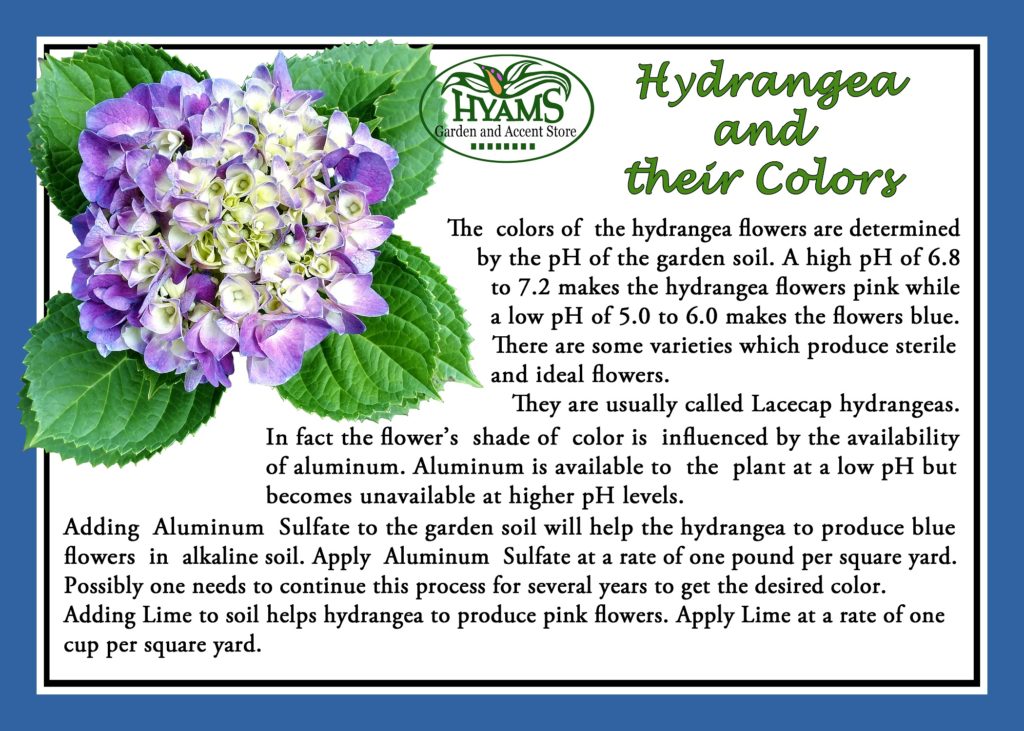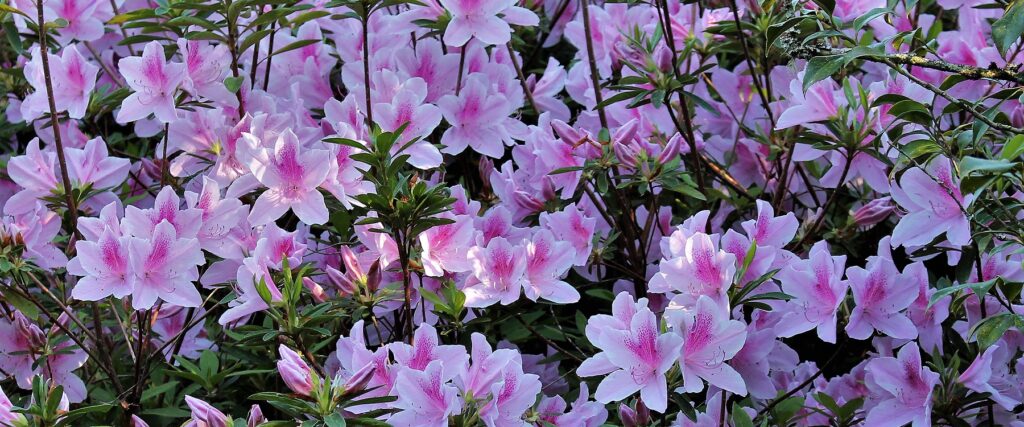The beautiful Hydrangea is a spectacular, colorful, floral display that adds charm and grace to any summer garden. Hydrangea derived its name from two Greek words, namely, hydr (water) and angeion (vessel). Water vessel is such a fitting name for hydrangea as this flower requires constant moisture to stay happy, healthy and blooming. However, getting the balance right is crucial to its health and survival.
There are some common signs and symptoms to look for in order to provide the best environment for your Hydrangea to thrive.
- Leaf Curl indicates that the plant has either been water deprived or is suffering from a disease.
- A sudden onset of ‘Yellowing of Leaves’ which then turn brown and fall off can indicate three things, namely, (a) the plant has become too dry; (b) the plant has become too wet; (c) the plant has received too much fertilizer.
Any of these three events can cause damage to the plant’s root system. If a plant has dried out, thoroughly soak the root ball, then make sure the soil is able to drain well. Allow time for soil to dry out slightly before the next watering. If conditions are favorable, roots will regenerate. A plant should be healthy before adding any fertilizer. Too much fertilizer can burn roots causing leaves to brown.
3. Leaf Spots are usually caused by fungus or bacteria.
(a) Cercospora Leaf Spot – Caused by a fungus, produces purple or brown colored leaf spots at the base of the plant.
(b) Anthracnose – Caused by a fungus, creates large brown, yellowish or black spots on leaves and flowers. If not properly attended to, this can be fatal to a hydrangea. Remove and destroy infected plant parts to discourage spreading of spores.
(c) Leaf Rust – Caused by a waterborne fungus, Pucciniastrum hydrangea, creates orange spots on the undersides of leaves.
(d) Bacterial Leaf Spots – Caused by the pathogen Xanthomonas campestris, produces spots that are either red or purple in color usually appearing on the leaves at the base of the plant. Spots by the leaf veins have an angular appearance.
4. Powdery Mildew – Caused by a fungus, appears as a powdery gray coating on leaves.
For fungal and bacterial mitigation, make sure there is enough air circulation around the plant. Cut back dried blooms and affected leaves. Keep the ground under the plant free from dead leaf and bloom debris. Water plant at the base rather than overhead to discourage moisture accumulation on the leaves. Fungicides can also be used. Apply in Spring and Mid-Summer. Application frequency depends on the severity of the case. Consult the product packaging for details.
BONIDE Revitalize Biofungicide is a broad-spectrum preventive biofungicide and bactericide. It utilizes the power of a naturally occurring beneficial bacterium, Bacillus amyloliquefaciens strain D747, to control and suppress fungal and bacterial diseases in plants. This bacterium triggers the plant’s immune response to fight off pathogens. It will also colonize plant roots, which prevents fungi and bacteria from establishing there.
Diseases controlled by this product:
Anthracnose (Colletotrichum species), Bacterial leaf blights, spots and specks (Erwinia, Pseudomonas and Xanthomonas species), Black Mold, Brown Spot, Black Crown Rot (Alternaria species). Black Spot of roses (Diplocarpon rosae), Gray Mold, Botrytis blight, Fruit Rot (Botrytisspecies), Leaf spots (Alternaria, Cercospora, Entomosporium, Helminthosporium, Myrothecium and Septoris species) and Powdery Mildews. (Podosphaera, Erysiphe, Golovinomyces, Sphaerotheca and Oidium species; Uncinula necator, Oidiopsis taurica and Leveillula taurica).


